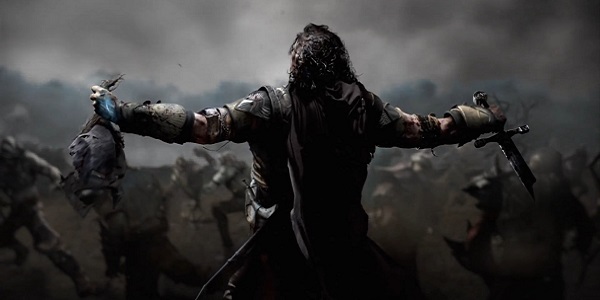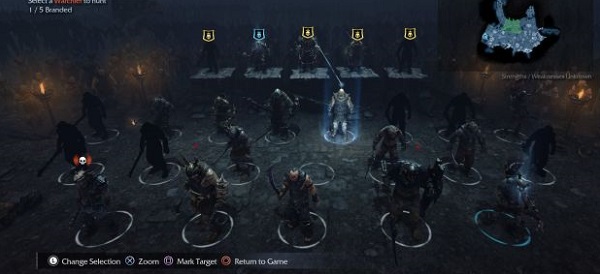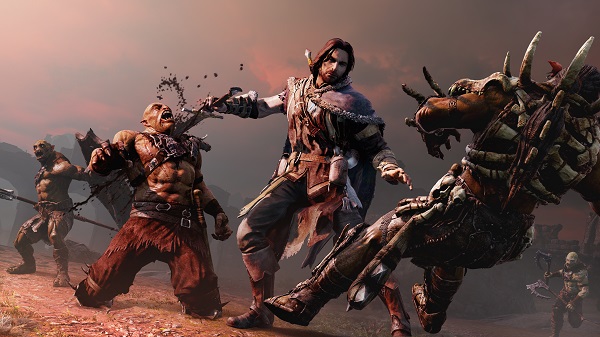Middle-earth: Shadow Of Mordor's Nemesis System Should Be Stolen

Middle-earth: Shadow of Mordor might not be the prettiest game on the market, and its major gameplay moments are, let's face it, cobbled together from bits and pieces of other successful action series. But what the game has really attempted to revolutionize—something I hope to see bleed into more and more games moving forward—is the idea of a more advanced, breathing world that evolves depending on the player's interactions with it.
I'm only about a dozen hours into Shadow of Mordor, a game that proudly wears its strong influences on its orc blood-spattered sleeves. The game is set in an open world, but it's not like that hasn't been done since the PlayStation 2 era. Your traversal throughout the world of Mordor is extremely reminiscent of the Assassin's Creed series, with Talion racing across fields at a sprint, ducking down to sneak past guards or vaulting up structures at the push of a single button. It's smooth, seamless and fun to execute, but it's been done before.
The combat, as it turns out, is ripped straight from the Arkham games, with the majority of your combat focused on chaining attacks together with a single button, using another button to parry an enemy when prompted, or simply rolling out of the way when an unblockable attack is coming your way. Again, like the game's locomotion, it's unoriginal yet totally works.
Even the game's structure is similar to games like Assassin's Creed or Infamous, with more sections of the map unlocking as you locate special towers, thus giving access to more side missions, collectibles and the like.
If this was all that Shadow of Mordor had to offer, it would still be a good game; one made up of an interesting world, loads of lore for folks who want to dig into it, exciting fights and unexpected moments. There's nothing wrong with being a Frankenstein's monster of a game, with all of your best parts simply lifted from other games that nailed the formula earlier on. Most of the big games that hit the market these days are such titles, standing on the shoulders of games that came before them and plugging their strongest qualities into a whole new experience.

What sets a game apart from the pack, however, is when it has something new to offer; something that future developers will hopefully be inspired by and find new and interesting ways to implement into their own games. While the majority of Shadow of Mordor is familiar, its intriguing Nemesis system is what makes it worth talking about, elevating it from just being the sum of its parts to being worthy of being aped itself.
Every now and then, a game comes along with a new feature that catches everyone's attention. “That's going to start popping up in more and more games,” I say to myself, even though it typically doesn't end up happening. Dark Souls' innovative multiplayer features are the example I typically give, with its randomly occurring ghosts of other players making the world feel more connected and playing into its haunted atmosphere nicely, and the blood stains of fallen players or glowing hints (or tricks) left by fellow warriors guiding the way. They're such clever features that everyone was talking about when the series first launched, yet nobody has bothered to borrow it for their own game.
Your Daily Blend of Entertainment News
I'm afraid that's going to be the case with Monolith Productions' Nemesis system in Mordor. Basically, the world is populated by captains and War Chiefs, all displayed in one of your menus as a hierarchy of baddies, not unlike one side of a chess board. As you gather intel throughout the world, you can learn more information about these characters, discovering their strengths weaknesses and location.
One captain, for instance, might be afraid of bees; a crippling fear that will cause him to run away from his companion orcs in order to get away. You may also learn that his health is continually regenerating, but that he's extremely vulnerable to stunned attacks.
While you could just run around the world willy-nilly and do your best to muscle through the opposition, that's a good way to get yourself overwhelmed and killed in Middle-earth. This information that you can gather allows the player to create a plan of attack, turning encounters into puzzles rather than button-mashing marathons. Keep an eye on that captain we were just talking about, and he might just stroll past a bees nest hanging from a high archway. Shoot the nest with an arrow, and watch as your tougher opponent flees the scene, leaving behind all of his backup. Follow him quickly and position yourself well, and you might even manage to stun him from the shadows and wipe him out with a single attack.

Using this interconnected network of enemies, you can gain more information on tougher enemies, and even bend former foes to your will, sending them to take out another captain in your stead or go to war with the bodyguards of a chief. Kill a chief's guards, for instance, and your tussle with the big bad will suddenly be tilted in your favor.
Where the system's “Nemesis” namesake comes from, however, is easily one of the game's most exciting features. As a sort of undead spirit inhabited by another undead spirit (long story), you can't really die in Shadow of Mordor. After being taunted by the orc that laid you low, you'll usually respawn at the nearest tower, ready to leap back into action. If the conditions are correct, however, that orc who did you in might be promoted up the hierarchy, gaining new powers and armor, as well as becoming more difficult to kill.
Nothing, and I mean nothing, makes me want to go after an in-game enemy more than knowing that they are still out there, stronger than ever, thinking they've gotten the best of me. If you get killed by a soldier in Call of Duty, for instance, he's just a faceless dude that you'll never be able to pick out in a crowd. You were bested by a random AI, so you just need to try the level again and keep on moving. In Mordor, Uvlock the Elf Crusher is an enemy unique to my game, and he's still out there waiting for me to return to the field of battle. When next we meet, I know he's going to taunt me about our previous encounter, and you better believe I plan to make him eat those words.
The system sometimes works in reverse, too. An captain you stabbed through the heart earlier might one day walk back onto the screen, pieces of metal covering his former wounds and his eyes emitting a ghostly blue glow. The first time that happened to me in Mordor, the enemy greeted me with something like, “You better make sure I'm dead next time,” before striding forward with a new entourage of grunts. Honestly, it was one of my favorite gaming moments in recent memory. This named enemy had returned from the dead, taunted me, and we were about to go toe-to-toe for a second time.
This time around, I ended our battle with an execution, lopping his head off with one mighty swing of my sword...Let's see him come back from that.
I still have a good ways to go in Shadow of Mordor but, so far, the Nemesis system has proven to be an ingenious evolution for enemy AI; one of those systems that seems so perfectly natural that you can't help but wonder why it's taken this long for someone to come up with it. While the game itself may be the combination of a lot of great systems pulled from great games of the past, this hierarchy of enemies is something I hope to see given a similar treatment, implemented into more and more games as the generation moves forward.
Staff Writer for CinemaBlend.

